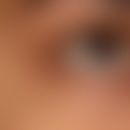Synonym(s)
DefinitionThis section has been translated automatically.
Autosomal dominant inherited partial anonymity of fingers and toes. Complete anonychia of thumbs and/or big toes. Missing or hypoplastic nails of further fingers or toes.
Clinical featuresThis section has been translated automatically.
Timerman et al (1969) described in a family patients with anonychia and onychodystrophy. The grandfather had bilateral complete onychodystrophy of the thumb, index and middle fingers with nail bed remains, which were present as small elevations on the outer finger edges. Fingers 4 and 5 were without nails in the middle part with 2 small atrophic nail lamellae on the sides. At the toes there was a complete anonychia of the big toes, a rudimentary crest at the right second toe, thin narrow nail lamellae at the left second and third toe and hypoplastic nails at the third and fourth toe. His daughter and also the grandson had analogous nail changes although on different fingers and toes.
Charteris (1918) described a 34-year-old man, in whom the nails of the thumbs as well as the 2nd and 3rd finger were completely missing. The ulnar halves of the nails of the 4th finger were normally formed. The nails of the 5th fingers were normally developed. A similar finding was evident on the toes. Nail defects could be traced back in the family to the great-grandmother.
LiteratureThis section has been translated automatically.
- Ahlgren SA et al (1988) Congenital hip dislocation and onychodystrophy in a family. Saudi Med J 9: 165-168.
- Charteris F (1918) A case of partial hereditary anonychia. Glasgow Med J 89: 207-209
- Strandskov HH (1939) Inheritance of absence of thumb nails. J Hered 30: 53-54
- Timerman I et al (1969) Dominant anonychia and onychodystrophy. J Med Genet 6: 105-106
Incoming links (1)
Genetically caused non-syndromal nail abnormalities;Disclaimer
Please ask your physician for a reliable diagnosis. This website is only meant as a reference.



